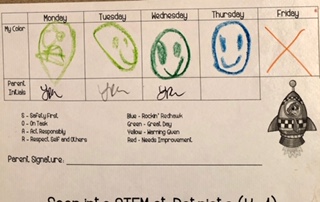What does assessment look like in your school? What should it look like? Are teachers as well as students assessing the quality of the work? What types of formative assessments are integrated into the curriculum?
Assessing, evaluating, and grading may have different meanings in most schools, but in most classrooms, it is viewed as the same. Grading is evaluating a student’s performance and not a direct measure of learning. Assessment is a means of improving student learning and has several forms.
Many schools use assessments to rank students and for accountability. These assessments do not help teachers improve instruction or aid in modifying strategies for student learning. Most classroom teachers use quizzes, tests, writing assignments, rubrics, etc. to get grades and some may use them to measure learning. If a teacher’s goal is to improve student learning (as it should be), then they must change their view of assessments and interpreting results. Assessments must be an integral part of the instructional process for helping students learn.
Assessment-centered classrooms “emphasize the need to provide frequent opportunities to make students’ thinking and learning visible and used as a guide for the teacher and the student in learning and instruction” according to the book How Students Learn by the National Research Council. According to Grant Wiggins, Relearning by Design, “Assessment should be deliberately designed to improve and educate student performance, not merely to audit as most school tests currently do”.
Documenting student learning progress plays a principal role in how our schools and programs are evaluated. Assessment has become a main point of discussion in education today because of accountability and core standards.
Our educators need to be knowledgeable and skilled in assessing students’ learning. Assessment is a competency that is as important as content knowledge and classroom management. Skilled assessment procedures provide information and documentation on a teacher’s effectiveness in teaching and lead to the student learning what they need to learn. It is not acceptable for an educator to say, “I taught the material, and they just don’t get it”. It is the job of educators and parents to create a path so students ‘get it’.
According to most state standards teachers should be knowledgeable and competent in knowing and understanding basic assessment terms and procedures as they apply to individual classrooms, selecting approaches such as formative, summative, self-assessment, skill diagnostic, etc. that are based on needs and situations, recording data and communicating the data to students and parents, and following ethical guidelines when assessing in the classroom.
Proper assessment techniques matter when reviewing student achievement. Its effects are seen with all types of learners when: meaningful feedback is provided to students during the instructional process to ensure that students are actively connected to the assessment, and the assessment is used by the teacher to examine the techniques to self-assess their work.
All classrooms use summative assessments if they give grades to students. To get the most from summative tests, formative assessments, and self-assessments must be directly connected to the learning. Even though they all have different purposes they need to be included in the process of accurately measuring a student’s academic learning.
If classroom assessments are aligned with an academic standard as a goal, then it supplies the teacher with the needed evidence of achieving the goal or finding a different strategy to reach the goal. According to Lockwood and McLean, “If assessment is to be a positive force in education, it must be implemented properly. It cannot be used to merely sort students or criticize education. Its goal must be to improve education. Rather than ‘teach to the test’, we must ‘test what we teach.”
An accurate picture of a student’s learning cannot be achieved through a summative report of worksheets, homework assignments, or tests – it is more. Grading is used as an evaluation of a student’s work. It is important that it accurately reflects the quality of student work as well as the learning. Providing feedback that is meaningful to students will enhance the student’s learning. Writing comments that teach is better than comments that justify the grade. The comment should also link the goal to the assignment. Instead of a final comment, a question should be asked that peaks a student’s thought process.
If you are an educator and are asked about the types of assessments you use in the classroom, your answer should focus on the attributes of an assessment-centered classroom. If you are a parent, you need to stress the importance of an assessment-centered classroom and not just the ‘grade’ your child received.



